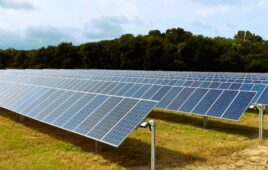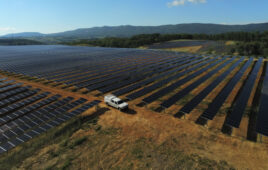Origo Investments is partnering with industry veterans Amond World to develop a refrigerated cold storage facility in the Madera Airport Industrial Park, which will include two 250,000 sq. ft buildings, each holding approximately 50 million lbs of almonds or other recently harvested crops for farmers and processors.
In order to guarantee energy access, reliability and cost economics while considering the sustainability of the facility, Origo has partnered with Scale Microgrids to design, build, own and operate an off-grid clean energy microgrid providing cheaper, cleaner and more reliable power.
The microgrid system will include 1,200 kW of rooftop solar. Storage of the solar energy will be provided by a 1,200 kW/ 2,400 kWh battery system. The microgrid will include two 1,200 kW enhanced emission-reducing controllable generators.
“The developer came to us with a need for an off-grid, sustainable and reliable power system for their facility in order to expedite their project development timeline”, said Ryan Goodman, CEO and co-founder at Scale Microgrids. “The sheer number of pounds of valuable inventory in this facility makes it absolutely impossible to have anything less than 100% continuous, reliable power. Our microgrid provides them with predictable, low energy costs for the long-term, clean power and peace of mind. We both finance and operate the system, leaving Amond World with only needing to focus on the farmers and the almonds.”
California is facing energy capacity shortfalls and extreme weather events, creating unpredictability for the local utility grid. The off-grid microgrid that Scale is building in Madera can run off of solar and storage alone for part of the day, a unique aspect for this size of a project.
Construction is already underway for the cold storage warehouses, where inside temperatures will dip down to 32℉. The energy system and buildings plan to be fully commissioned by May 2023.
News item from Scale Microgrids





“Keep in mind, this facility is not connected to the electrical grid because the utility was unable to provide service, so a PSPS wouldn’t impact it at all.”
Interesting, so can one say the break over point to go off grid seems to be somewhere around $0.25/kWh to $0.30/kWh bundled retail energy rates and after that one’s own ‘power supply’ is cheaper to install, operate and maintain over paying the electric utility for their energy? So much for the utility ‘death spiral’, this looks a lot like a final crash and burn for the electric utilities. Less of a ‘spiral’ more like a lawn dart into the ground. At the residential and small business sector, one that has a large solar PV array and smart ESS can become grid interactive or grid agnostic, the rote IOU electric utilities are on notice, whether they personally have noticed or not.
“The microgrid system will include 1,200 kW of rooftop solar. Storage of the solar energy will be provided by a 1,200 kW/ 2,400 kWh battery system. The microgrid will include two 1,200 kW enhanced emission-reducing controllable generators.”
The less than two hour energy storage is a ‘tell’ of the intent to fall back on the “…1,200KW enhanced emission-reducing controllable generators.”, and use the backup battery for surges in the plant demands and generator outputs. Basically a long term PSPS of a “few days” would also destroy all the refrigerated items in the warehouse if not for the backup fueled generators.
The business as usual design for an off-grid project like this is to build sufficient natural gas generation to meet peak load, plus additional capacity for redundancy, and then run it 100% of the time. By adding solar and battery storage we are able to reduce the gas generation capacity required, and it can be utilized far less.
Keep in mind, this facility is not connected to the electrical grid because the utility was unable to provide service, so a PSPS wouldn’t impact it at all.